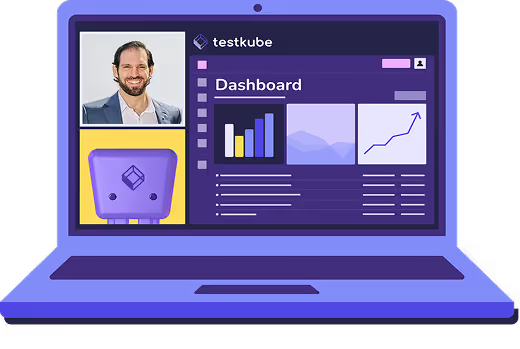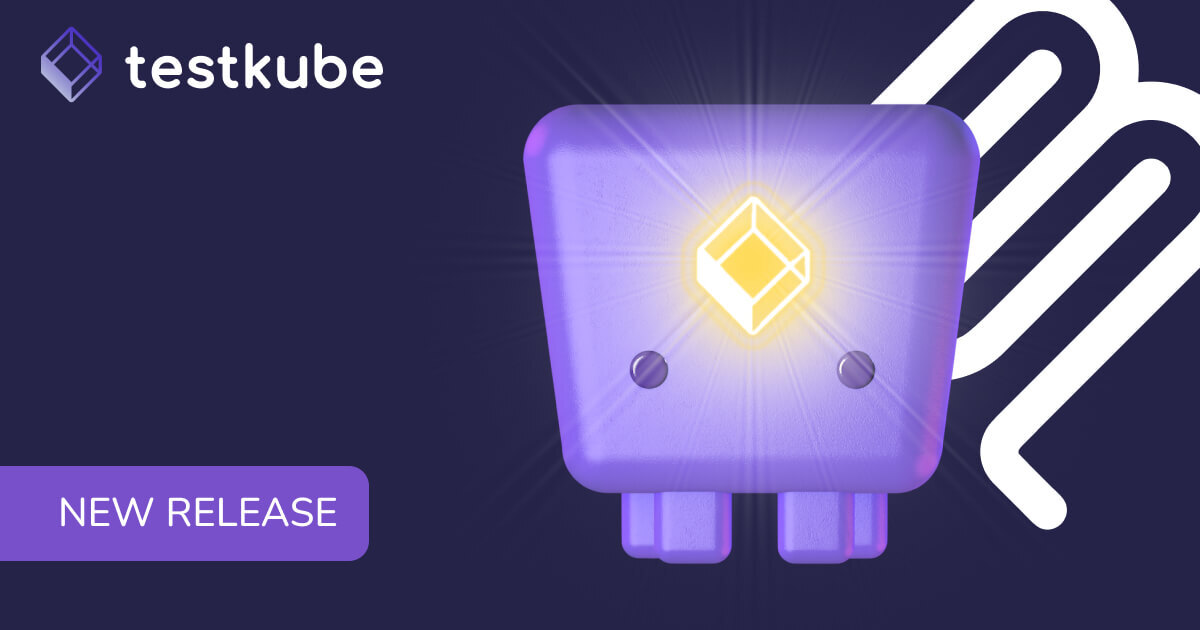

Table of Contents
Try Testkube instantly in our sandbox. No setup needed.
Unlock Better Testing Workflows in Kubernetes — Try Testkube for Free




Table of Contents
Executive Summary
New here? Testkube is a Kubernetes-native testing framework for testers and developers. It acts as an executor so you can orchestrate, run, and display tests and test results for your code in a Kubernetes environment. Whether you're new to the K8s ecosystem or a seasoned pro, Testkube lets you focus on testing without having to complicate yourself, your processes, or your pipelines.
UI Updates
Create your Kubernetes Tests easily - we updated our test creation form

The most important and major update for our dashboard in its 1.10 version is all about improving user experience during test creation. For newcomers, basic test creation can be a rather challenging task because of the multiple inputs and choices, so we decided to simplify the process by providing an overall better experience with features like Documentation links, Tooltips, Placeholders, and more.
We also changed the order of our input fields, added executor icons based on your selection, and made the Path field optional.
Test Sources Based on Test Type
When selecting a Type of Test to create (Postman, Cypress, SoapUI, etc.), you also need to select a Test Source (for example, Git). However, not every source can be used for all tools, which added noise to the test creation process.
From this release on, you’ll only be allowed to select the Test Sources that apply to your Test Type.
Tooltips

To improve your user experience, we added Tooltips to most of the test creation modal fields, like Path or Git repository.
These aim to provide better user guidance throughout test creation and understanding what needs to be entered in each field.
Documentation Links

Starting now, when you select a Test Type, you will see its icon and a link to its specific documentation to read more about it.
General Updates
New Executor: Run Playwright Tests with Testkube
Starting now, Testkube has full, native support for Playwright Tests. Playwright is a JavaScript end-to-end testing framework, which has gained popularity rapidly since its initial release in 2020.
If you are already using it, you can read our docs or follow our tutorial to start running your tests in a cloud-native way.
Merging Git Directory and Git File into One Source
Prior to this release, Testkube supported 2 types of git based content: git directories and git files. Users had to specify exactly what was stored in the git repository, which would often lead to different errors and inconsistencies.
Starting now, you can simply point that content is git based and Testkube will automatically detect if it’s a file or directory.
Merging Envs and Variables
We decided to simplify and unify usage of these approaches by merging them. As for now, we deprecated env and secret env parameters.
You should be able to achieve the required behavior by using Basic and Secret Variables.
NegativeTests

If you expect some test to fail and you want Testkube to report that everything is going as expected, you now have the possibility to set the tests as Negative Tests - thus expecting to fail. Tests will then report a Pass status if they failed as expected, or will show Failed if the test passed.
Access Test Suite Artifacts from the CLI
You can now see all the Artifacts (output generated Test files) for your Test Suites directly from your command line tool. Instead of having to check the execution for every test that runs as part of a testsuite, just run the following command:
testkube get artifacts testsuite_execution_name
Reasons for Test Trigger Conditions
In our previous release, we introduced Test Trigger conditions to specify the state of Kubernetes resources you might need in order to run any particular Test or Test Suite.
Following our community requests, we enhanced this feature by supporting the definition of Reasons for the resource state. This allows you to be even more specific about triggered events.

Find out how to set and define Test Trigger conditions and reasons here.
Mounting ConfigMaps and Secrets as Files into Test Pods
Recently, one of the most popular requests from our community was on mounting ConfigMaps and Secrets into Test Pods. From this release and on, you will simply need to provide ConfigMap and Secret names in order to achieve this.
Automatic Variable Creation
Now you can also automatically create Basic and Secret Variables from ConfigMaps and Secrets - and use them in your test scripts.
Error Reporting
We recently realized some Testkube errors were not verbose enough, and did not offer a lot of help in finding issues. Although users that are familiar with Kubernetes may be able to debug errors themselves, we decided to make error reporting more approachable.
For this release, we started wrapping Test-related errors with clear and concise messages, and will continue to work on improving the messaging on other types of errors in our upcoming versions.
Larger, More Reliable File Uploads
Running tests that require additional input files was already possible in Testkube - so in this release, we added the --upload-timeout flag to the testkube create test and the testkube run test commands:
--upload-timeout string timeout to use when uploading files, example: 30sThis flag increases the HTTP client timeout, so that bigger size files can be uploaded from the CLI with no timeout errors. To address this on the server-side, we also increased the default body size limit to 1 GB.
Improved Documentation

We completely revamped our documentation site to give our new and existing users a much better experience.
You can find new Guides, more specific Executor pages, and plenty of resources to get you ramped up and testing with Testkube in no time.
Check out our new site in docs.testkube.io!
Give it a go
Why not give it a go yourself? Sign up to Testkube and try one of our examples or head over to our documentation. If you get stuck or have questions, we’re here to help! Reach out to us on Slack. We’re eager to hear how you use Testkube...!


About Testkube
Testkube is a cloud-native continuous testing platform for Kubernetes. It runs tests directly in your clusters, works with any CI/CD system, and supports every testing tool your team uses. By removing CI/CD bottlenecks, Testkube helps teams ship faster with confidence.
Explore the sandbox to see Testkube in action.






.jpg)